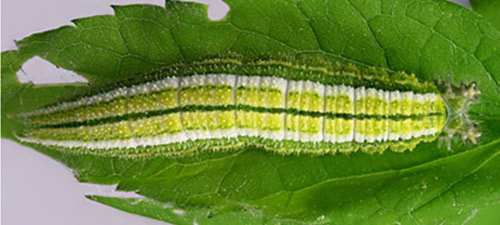|
Co-written by Jennifer Dawson and Rebecca Chandler Monarch butterflies are an iconic species known for their incredible mass migration across North America each winter — a journey of up to 3,000 miles. However, numbers of monarch butterflies have unfortunately fallen precipitously over the past two decades. Using cutting-edge technology to monitor monarch butterflies may be able to help us learn more about this wonderful species and, ultimately, help us better protect them.Camera dronesDrones can be a great way to monitor monarch butterflies in flight and visually record the findings. Drones come with advanced GPS tracking systems, which let you track the drone’s activity and flight data from your smartphone. They also allow you to take high-resolution photos for highly accurate data analysis. They’re able to collect data in harsh weather conditions or locations it may be otherwise difficult to reach. Drones can also be easy to use and quiet, so you won’t have to worry about disrupting wildlife. However, it’s important to follow safety precautions when operating drones. In particular, check out the rules and regulations in your city or state concerning drone usage. That way, you can be in accordance with the law and avoid being hit with any fines or penalties when tracking monarch butterflies Electronic tags Electronic tags were recently placed on free-flying monarch butterflies for the first time ever in recorded history. Martin Wikelski, an ecologist, worked with Chip Taylor, a monarch butterfly expert, on the project aiming to shed light on monarch migration habits. The electronic tags are extremely lightweight (weighing .007 of an ounce) and were carefully attached to each individual butterfly by hand. Initially, the butterflies had to become accustomed to the slight extra weight before flying off happily. Scientists can now track the butterflies on their migration journey for thousands of miles, study their habits, and discover their favored habitats along the way. Tracking apps Researchers at the University of Maine have created a new app called the Monarch Model Validation Project that allows people on the East Coast to take photos of monarch butterfly migration sites. Users can also include written details of where exactly they saw the butterflies. By studying photos of roosting butterflies researchers can learn where the butterflies rest overnight on their migration journeys. The app is a unique way concerned citizens can help scientists learn more about this iconic species. HabiTally is another app that has been developed by Iowa State University in collaboration with the Iowa Monarch Conservation Consortium. This app allows users to anonymously submit data which will report increases in milkweed across the U.S. and also tell us where current habitat exists. Technology is continually evolving to help us understand monarch butterflies better. Drones, electronic tags, and apps all play an essential role in helping us discover more about and, ultimately, conserve the species.
15 Comments
The Save Our Monarchs Foundation is devoted to saving the monarch butterfly from extinction by promoting the planting of milkweed and native flowers across the US. We need help to reach the goal of 20K School Gardens in 2020!
Even the smallest donation will help the cause. If you would like to donate to our School Pollinator Program you can donate as little as $2. The good news is that in 2018-2019 the migration from Mexico to the US was up 140% over the previous year, the first time since 1992 that there has been an increase. We would like to offer our sincere gratitude to everyone across North America who has rallied to this cause, planting their own pollinator gardens and especially the thousands of participants in Save Our Monarchs who had a direct hand in the repopulating of the monarch Much more info is available at the SaveOurMonarchs.org website, and also at Facebook.com/SaveOurMonarchs. So, Happy New Year to you and yours! And we thank you and the monarchs thank you. Ward Johnson Director SaveOurMonarchs.org 612-356-4527 |
AuthorRebecca Chandler Archives
March 2024
Categories |






 RSS Feed
RSS Feed